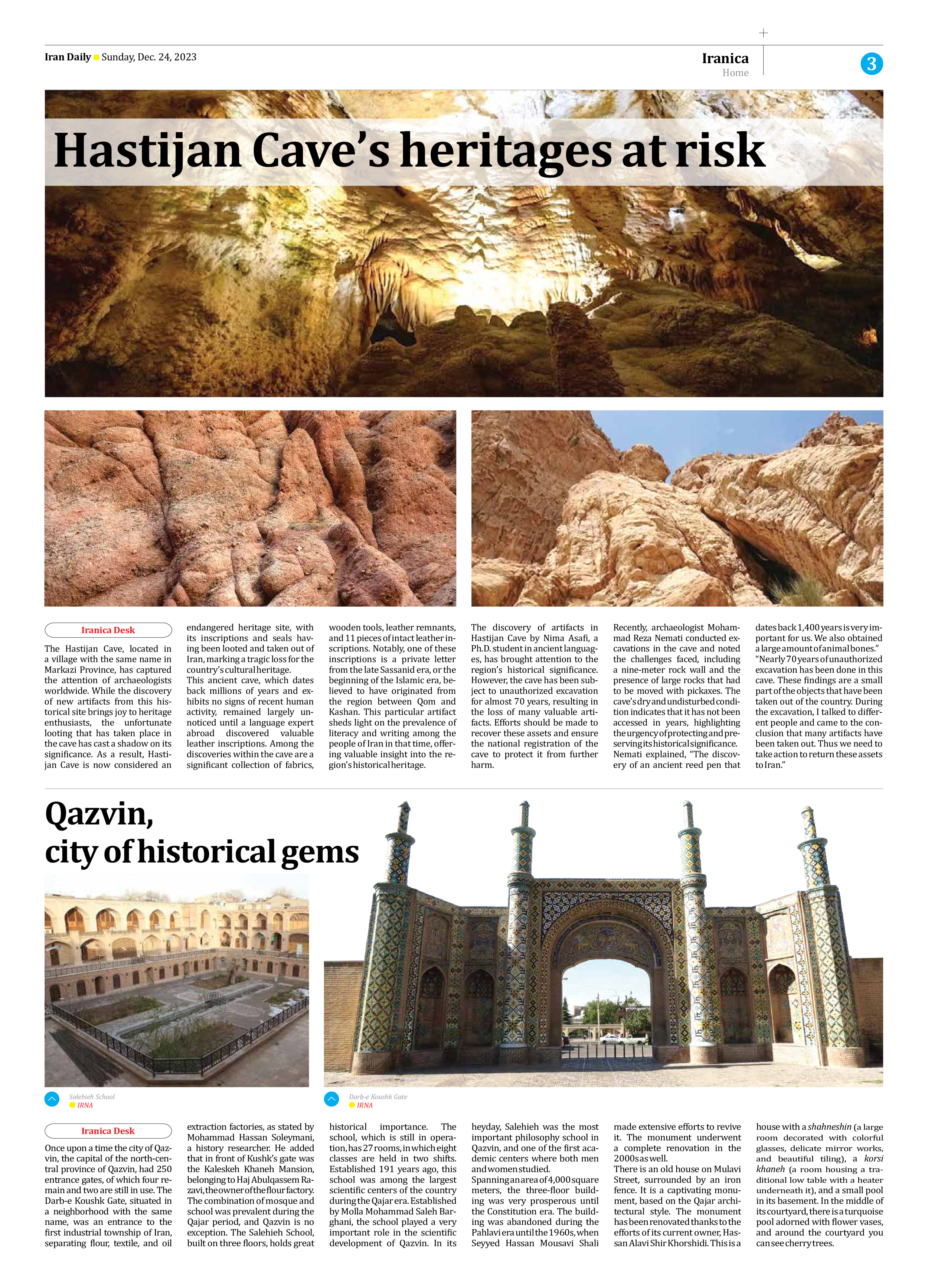
Hastijan Cave’s heritages at risk
The Hastijan Cave, located in a village with the same name in Markazi Province, has captured the attention of archaeologists worldwide. While the discovery of new artifacts from this historical site brings joy to heritage enthusiasts, the unfortunate looting that has taken place in the cave has cast a shadow on its significance. As a result, Hastijan Cave is now considered an endangered heritage site, with its inscriptions and seals having been looted and taken out of Iran, marking a tragic loss for the country’s cultural heritage.
This ancient cave, which dates back millions of years and exhibits no signs of recent human activity, remained largely unnoticed until a language expert abroad discovered valuable leather inscriptions. Among the discoveries within the cave are a significant collection of fabrics, wooden tools, leather remnants, and 11 pieces of intact leather inscriptions. Notably, one of these inscriptions is a private letter from the late Sassanid era, or the beginning of the Islamic era, believed to have originated from the region between Qom and Kashan. This particular artifact sheds light on the prevalence of literacy and writing among the people of Iran in that time, offering valuable insight into the region’s historical heritage.
The discovery of artifacts in Hastijan Cave by Nima Asafi, a Ph.D. student in ancient languages, has brought attention to the region’s historical significance. However, the cave has been subject to unauthorized excavation for almost 70 years, resulting in the loss of many valuable artifacts. Efforts should be made to recover these assets and ensure the national registration of the cave to protect it from further harm.
Recently, archaeologist Mohammad Reza Nemati conducted excavations in the cave and noted the challenges faced, including a nine-meter rock wall and the presence of large rocks that had to be moved with pickaxes. The cave’s dry and undisturbed condition indicates that it has not been accessed in years, highlighting the urgency of protecting and preserving its historical significance.
Nemati explained, “The discovery of an ancient reed pen that dates back 1,400 years is very important for us. We also obtained a large amount of animal bones.”
“Nearly 70 years of unauthorized excavation has been done in this cave. These findings are a small part of the objects that have been taken out of the country. During the excavation, I talked to different people and came to the conclusion that many artifacts have been taken out. Thus we need to take action to return these assets to Iran.”







